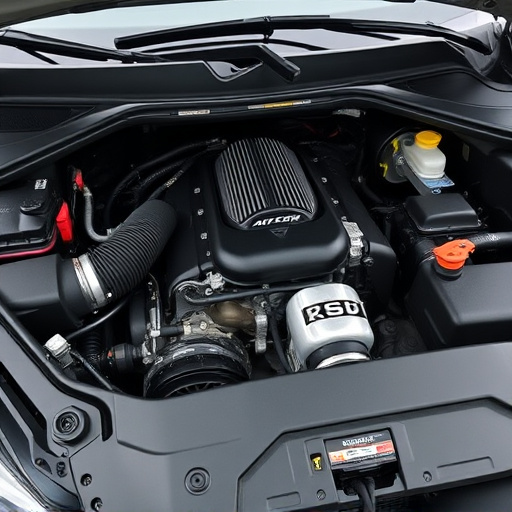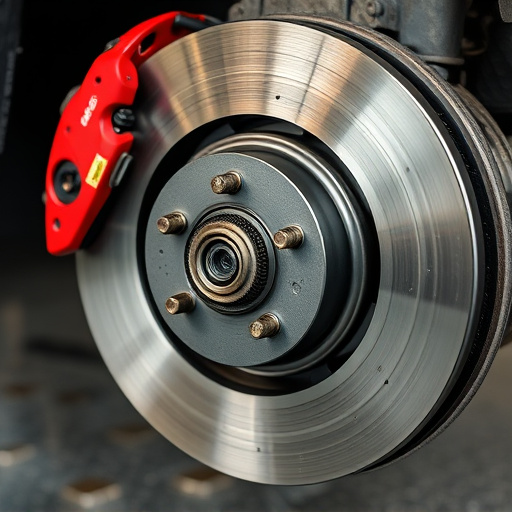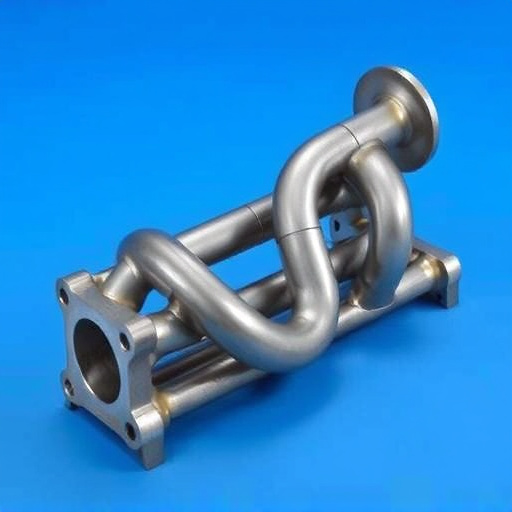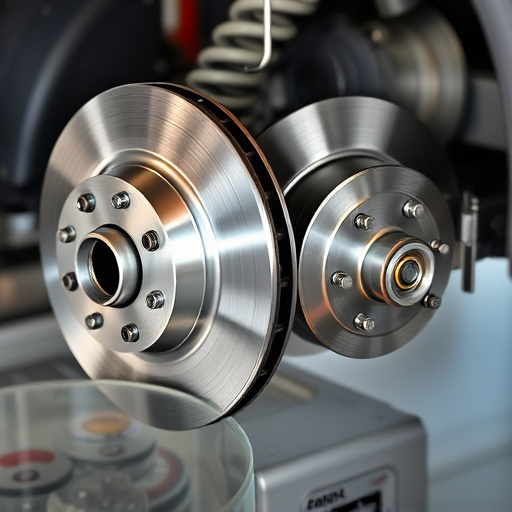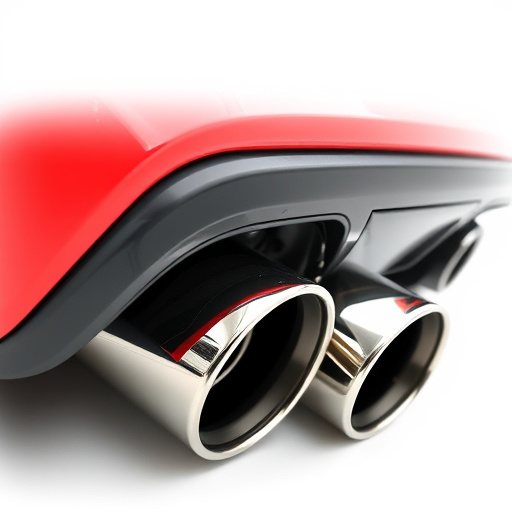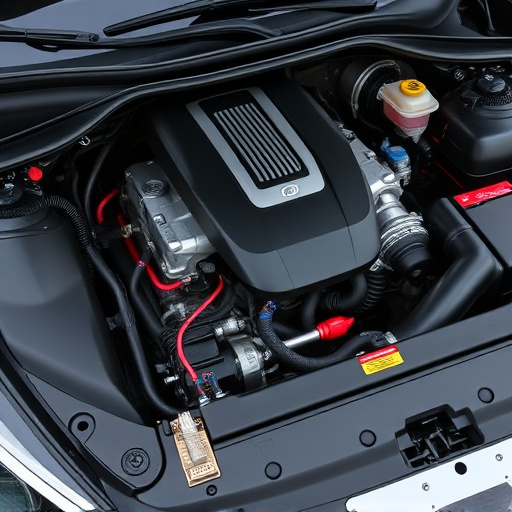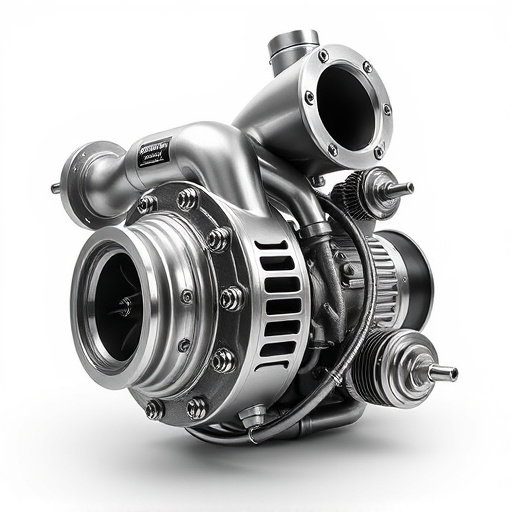A turbocharger system boosts engine performance and efficiency by compressing incoming air using an axel-driven turbine, increasing oxygen intake during combustion. Key components include a compressor for drawing in and compressing air, and a turbine powered by exhaust gases to drive the compressor continuously. This technology reduces emissions, improves fuel burning efficiency, and enhances vehicle dynamics, making it crucial in modern engines' push towards eco-friendly high-performance.
The turbocharger system, a powerful tool in automotive engineering, has transformed both emissions control and fuel efficiency. This technology boosts engine power while improving performance. In this article, we explore the intricate workings of turbocharger systems and their profound impact on modern vehicles. We’ll delve into how they contribute to stringent emissions reduction strategies and enhance overall fuel efficiency through advanced technical innovations. Understanding these mechanisms is key to unlocking a greener future in motoring.
- Understanding Turbocharger Systems: Basic Functionality
- Impact on Emissions Reduction Strategies
- Enhancing Fuel Efficiency: Technical Insights
Understanding Turbocharger Systems: Basic Functionality

A turbocharger system is a powerful tool designed to enhance both the performance and efficiency of an internal combustion engine. It works by compressing incoming air using an axel-driven turbine, which then forces more oxygen into the engine’s cylinders during intake. This increased airflow allows for a larger amount of fuel to be injected, resulting in higher power output and improved torque. The key component is the turbocharger itself, which consists of two main parts: the compressor and the turbine.
The compressor draws in ambient air and compresses it, increasing its density and pressure. This compressed air is then routed into the engine’s intake system, typically through a cold air intake, which ensures the coolness and purity of the air for optimal combustion. The turbine, on the other hand, utilizes the exhaust gases from the engine to spin and drive the compressor. This continuous cycle not only boosts engine power but also contributes to more efficient burning of fuel, thereby reducing emissions. In contrast to naturally aspirated engines, a cat back exhaust system can be integrated with turbochargers to facilitate smoother gas flow and further enhance performance.
Impact on Emissions Reduction Strategies

The integration of a turbocharger system into vehicles has significantly influenced emissions reduction strategies. By forcing more air into the engine, turbochargers increase the efficiency of combustion processes. This leads to better fuel utilization and reduced emissions, particularly in terms of nitrogen oxides (NOx), which are major contributors to air pollution. Moreover, modern turbocharger systems are designed with advanced controls and sensors that enable precise tuning for optimal performance and lower emissions.
This technology plays a pivotal role in the automotive industry’s shift towards more eco-friendly high-performance parts. As regulations tighten, manufacturers are leveraging turbochargers to meet stricter emission standards without compromising on power or performance. Additionally, components like suspension systems and brake rotors, although not directly affected by the turbocharger itself, benefit from the overall improvement in vehicle dynamics and efficiency that results from this technology.
Enhancing Fuel Efficiency: Technical Insights
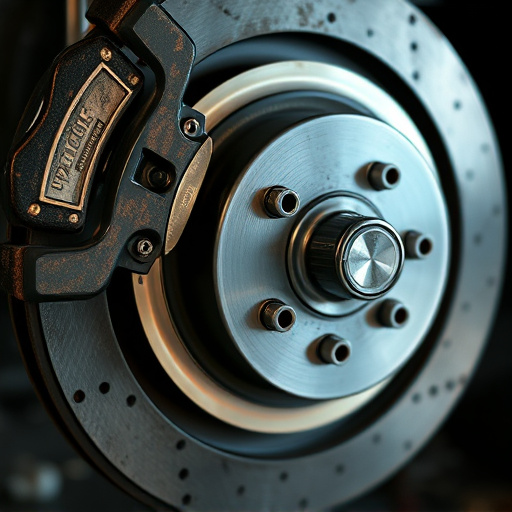
The turbocharger system plays a pivotal role in enhancing fuel efficiency by optimizing the engine’s performance. When air is forced into the engine at higher pressures, it allows for more efficient combustion, leading to improved torque and power output. This process, facilitated by the turbocharger, ensures that each cylinder receives an adequate supply of compressed air, resulting in better fuel burning and reduced wastage.
Moreover, modern turbocharger systems are equipped with advanced technology like variable vane turbines and precise control mechanisms. These innovations enable the turbo to respond swiftly to changes in engine speed and load, maintaining optimal pressure levels. This precision contributes to a smoother power delivery, improved throttle response, and overall fuel efficiency, making it an essential component for achieving better mileage without compromising on power.
The turbocharger system has emerged as a powerful tool in the pursuit of cleaner emissions and improved fuel efficiency. By forcing more air into engines, it enhances combustion, leading to reduced pollutant outputs while boosting power output. This technology plays a pivotal role in meeting stringent environmental standards, offering a balanced approach to performance and sustainability. Understanding how turbochargers work and their potential to optimize engine efficiency is key to shaping the future of automotive engineering.





